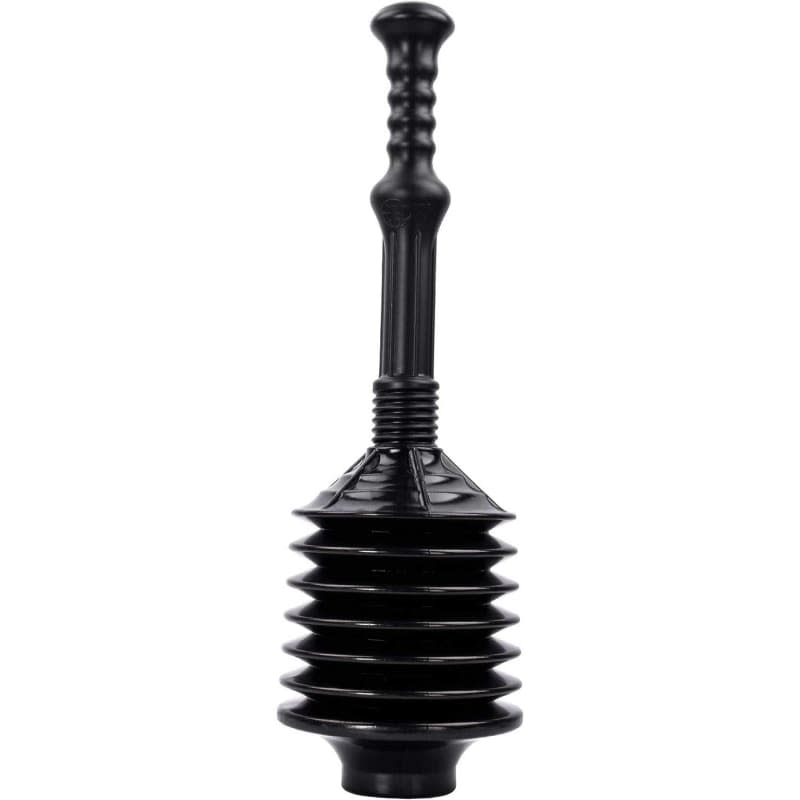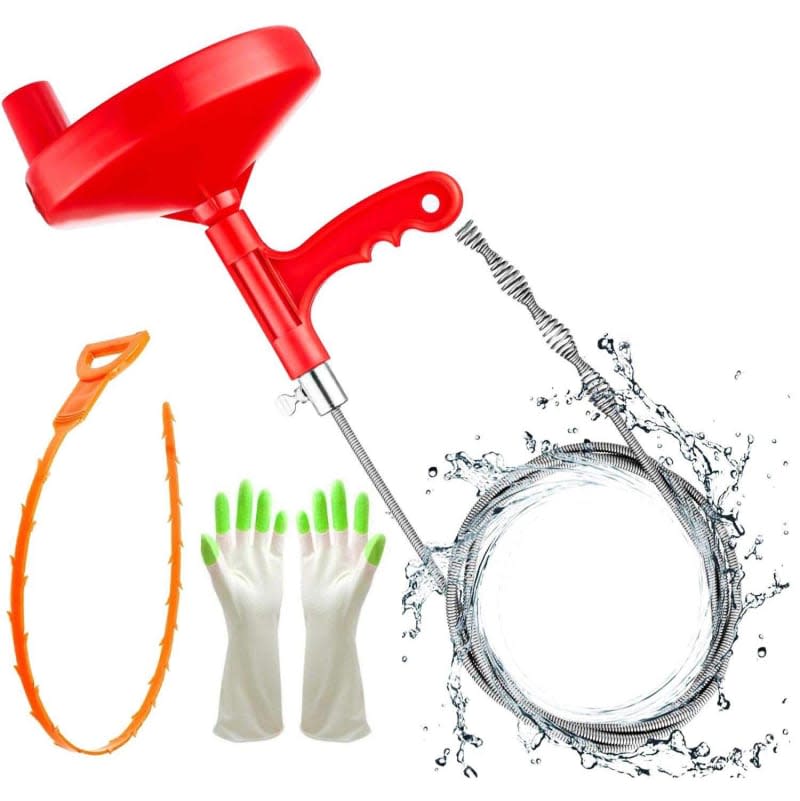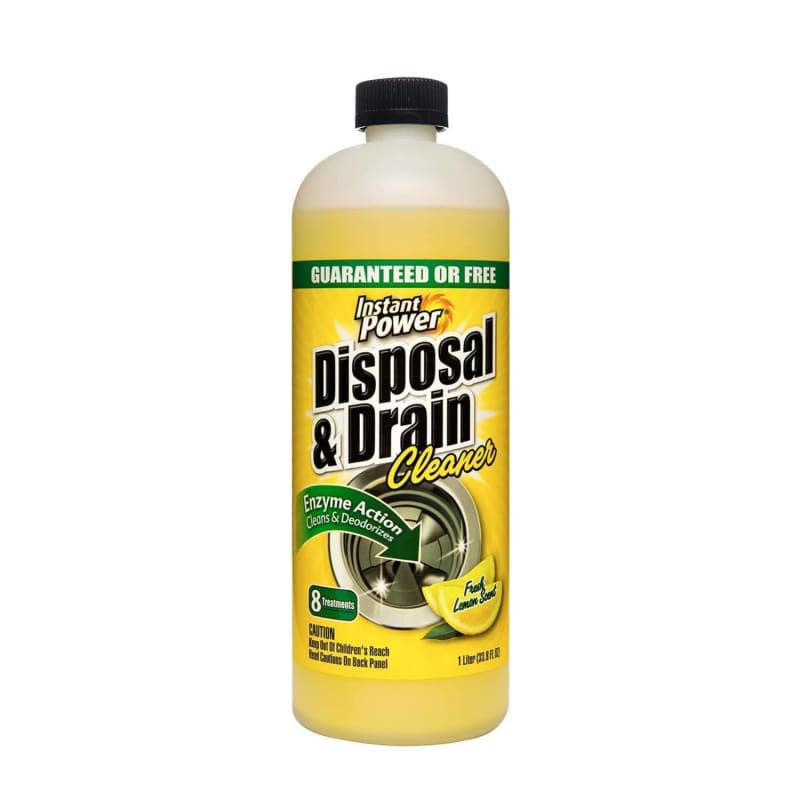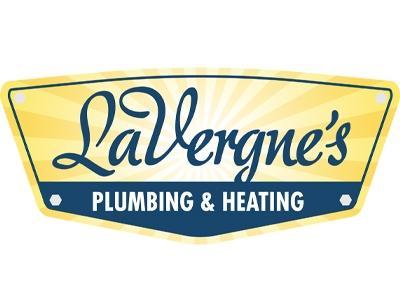When it comes to home maintenance issues, there’s not much worse than a clogged kitchen sink. With all the food and gunk that goes down there on the regular, the situation can become grim pretty quickly. That’s why you want to know how to unclog a kitchen sink before you need to do it, rather than after!
Of course, you can always call a plumber when you notice those telltale signs of a clogged kitchen sink: food backing up, odd smells, or water draining slowly. Or, you can consult our handy guide, where we’ve reached out to a few plumbing experts for the 4-1-1 on how to unclog a kitchen sink.
How Do Kitchen Sink Clogs Happen?
Whether you live in a mansion or a tiny home, your family is large and growing or you’re living solo, your kitchen sink gets a ton of use every single day. Food waste, coffee grounds, and oily substances likely find their way down your drain without you even thinking about it. But these things can all contribute to kitchen sink clogs, which should be remedied as soon as they’re noticed. We reached out to Mark Morris, an independent master plumber with more than 10 years of experience unclogging drains. Here’s what he said are the most common items that can cause kitchen sink clogs:
-
Grease, oil, and fat, which can solidify in the pipes and trap debris
-
Food scraps
-
Hair
-
Soap scum
-
Dirt
-
Foreign objects
How to Unclog a Kitchen Sink
The good news is, as long as you only have a minor clog, it’s pretty simple to remedy the situation on your own, without having to call a professional. Morris shares several methods you should try if you’re wondering how to unclog a kitchen sink without hiring help.
JS Jackson Supplies Accordion Toilet Plunger
$12.99
Buy Now
Method #1: Use a plunger
A plunger is a simple and effective tool that uses suction and pressure to dislodge the clog, Morris says. Here are the steps you can follow in order to clear your kitchen sink drain using a plunger.
-
Fill the sink with enough water to cover the drain opening.
-
If you have a double sink, plug the other drain with a wet cloth or a stopper.
-
Place the plunger over the drain and make sure it forms a tight seal.
-
Pump the plunger up and down vigorously for about 15 seconds.
-
Pull the plunger off the drain and see if the water drains.
-
Repeat the process until the clog is cleared.
Method #2: Use baking soda and vinegar
Wondering how to unclog a kitchen sink naturally? Try using baking soda and vinegar — they’re organic ingredients that can produce a chemical reaction that can dissolve the clog. Here are the steps you’ll follow for this method, which is free of harmful toxins or chemicals.
-
Pour one cup of baking soda down the drain.
-
Pour one cup of white vinegar down the drain.
-
Cover the drain with a plug or a wet cloth and let it sit for 15 minutes.
-
Remove the cover and flush the drain with hot water.
-
Repeat the process until the clog is cleared.
Forlivese Plumbing Snake Drain Auger
$19.99
Buy Now
Method #3: Use a snake or auger
A snake or an auger is a flexible metal or plastic tool that can reach deep into the drain and break up or pull out the clog. You can find a simple drain snake at your local hardware store, or at Amazon, like this one or this one. Here are the steps to follow for unclogging your sink using a snake or an auger:
-
Remove the drain stopper or strainer if possible.
-
Insert the snake or auger into the drain and push it until you feel resistance.
-
Crank the handle clockwise to rotate the head and hook the clog.
-
Pull the snake or auger out of the drain and dispose of the clog.
-
Repeat the process until the clog is cleared.
Instant Power Disposal and Drain Cleaner
$5.31
Buy Now
Method #4: Use a chemical drain cleaner
Chemical cleaners work best on the sorts of clogs that occur from build-up, says Michael Green, Vice President of Operations at Benjamin Franklin Plumbing. “They’re designed to eat away the grime that accumulates from regular usage. If you have a naturally occurring clog that you suspect is close to the top of the pipe, near the drain, a chemical cleaner should be perfectly effective at treating it,” Green said. “Chemical products tend to become less effective the further away the clog is from the point of entry.”
Method #5: Use hot water
Hands down, the cheapest and easiest method for how to unclog a kitchen sink drain is to use very hot water. “Be careful not to use boiling water, because if the pipe is plastic, the high heat from boiling water could partially melt and deform the material,” says Green. “Metal pipes are more resilient, but excessive heat can weaken the metal in such a way that cracks and leaks become more likely down the line. This is especially true for older pipes.”
How to Prevent Kitchen Sink Clogs
You know the saying: an ounce of prevention is better than a pound of cure. And that certainly applies to your kitchen sink drain, too! If you’re hoping to avoid having to employ any of the above methods to unclog your kitchen sink, Morris recommends doing the following for regular cleaning and maintenance of your drain:
-
Run cold water before, during, and after using the garbage disposal to flush out any particles and prevent them from sticking to the pipes.
-
Avoid putting grease, oil, fat, bones, shells, seeds, pits, coffee grounds, eggshells, rice, pasta, potato peels, celery, corn husks, banana peels, or other hard or fibrous foods into the garbage disposal as they can damage the blades or cause clogs.
Clean your garbage disposal regularly by running some ice cubes and salt through it to sharpen the blades and remove any buildup. You can also add some lemon peels or baking soda and vinegar to deodorize and sanitize your garbage disposal.













